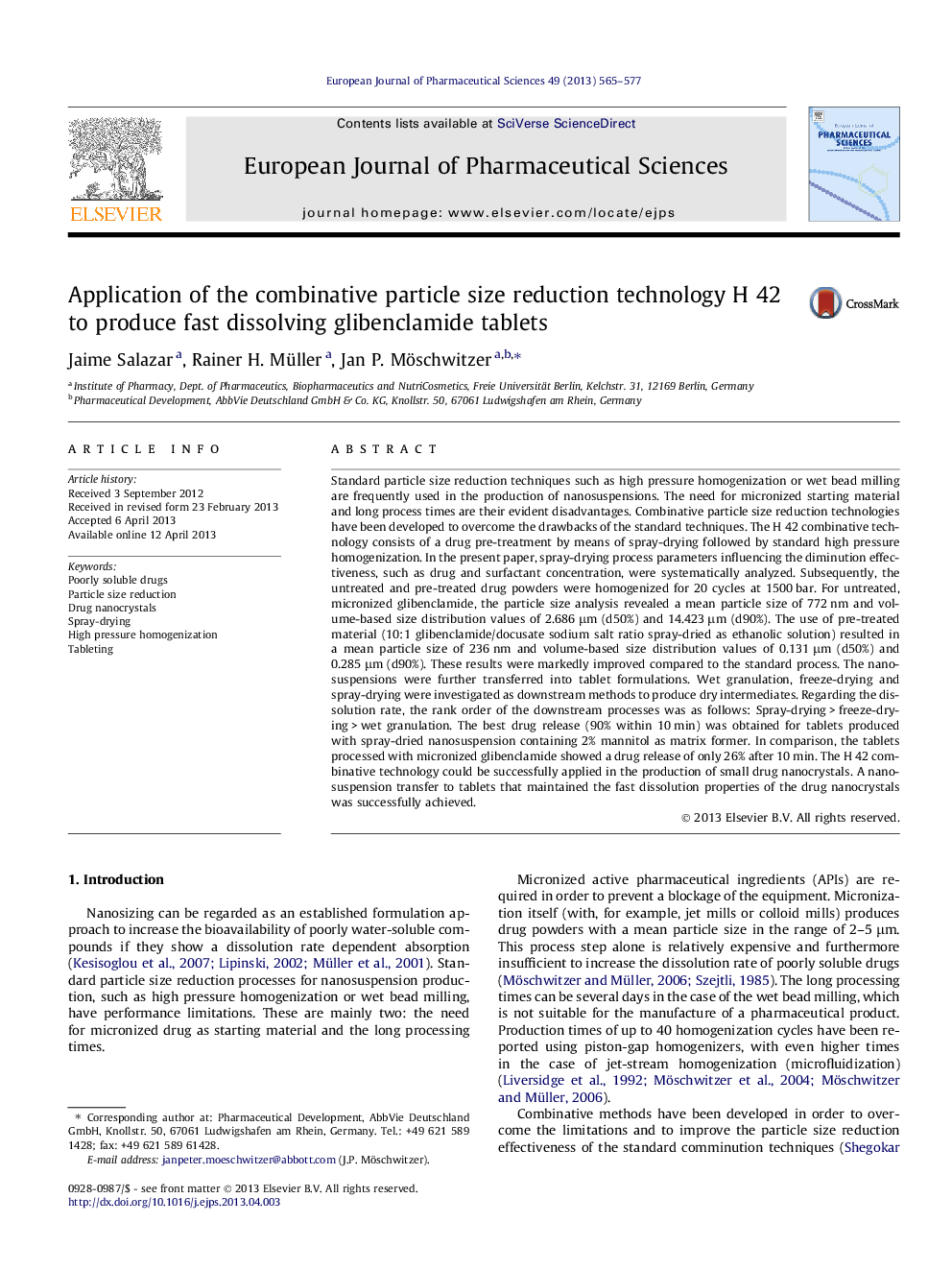| کد مقاله | کد نشریه | سال انتشار | مقاله انگلیسی | نسخه تمام متن |
|---|---|---|---|---|
| 2480850 | 1556206 | 2013 | 13 صفحه PDF | دانلود رایگان |

Standard particle size reduction techniques such as high pressure homogenization or wet bead milling are frequently used in the production of nanosuspensions. The need for micronized starting material and long process times are their evident disadvantages. Combinative particle size reduction technologies have been developed to overcome the drawbacks of the standard techniques. The H 42 combinative technology consists of a drug pre-treatment by means of spray-drying followed by standard high pressure homogenization. In the present paper, spray-drying process parameters influencing the diminution effectiveness, such as drug and surfactant concentration, were systematically analyzed. Subsequently, the untreated and pre-treated drug powders were homogenized for 20 cycles at 1500 bar. For untreated, micronized glibenclamide, the particle size analysis revealed a mean particle size of 772 nm and volume-based size distribution values of 2.686 μm (d50%) and 14.423 μm (d90%). The use of pre-treated material (10:1 glibenclamide/docusate sodium salt ratio spray-dried as ethanolic solution) resulted in a mean particle size of 236 nm and volume-based size distribution values of 0.131 μm (d50%) and 0.285 μm (d90%). These results were markedly improved compared to the standard process. The nanosuspensions were further transferred into tablet formulations. Wet granulation, freeze-drying and spray-drying were investigated as downstream methods to produce dry intermediates. Regarding the dissolution rate, the rank order of the downstream processes was as follows: Spray-drying > freeze-drying > wet granulation. The best drug release (90% within 10 min) was obtained for tablets produced with spray-dried nanosuspension containing 2% mannitol as matrix former. In comparison, the tablets processed with micronized glibenclamide showed a drug release of only 26% after 10 min. The H 42 combinative technology could be successfully applied in the production of small drug nanocrystals. A nanosuspension transfer to tablets that maintained the fast dissolution properties of the drug nanocrystals was successfully achieved.
Figure optionsDownload high-quality image (52 K)Download as PowerPoint slide
Journal: European Journal of Pharmaceutical Sciences - Volume 49, Issue 4, 16 July 2013, Pages 565–577